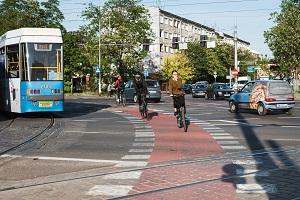UNECE’s new Transport Statistics Infocard offers a new, user-friendly country-by-country perspective on important transport topics that are needed to inform policy decisions: road safety, numbers of cars and length of railways, alternative fuel use and public transport.
Across the UNECE region countries are striving to facilitate shifts to greener, more sustainable forms of transport that can keep both economies and societies moving, healthy and safe. Making the right data available and, crucially, understandable for transport decision-makers is essential to support these shifts, allowing successful policies to be replicated across countries.
UNECE compiles detailed data on the principal inland modes of passenger and freight transport, and on road safety performance, for each of the 56 UNECE member States. These data are available via the UNECE statistical database, where they can be downloaded or analyzed online by users.
The new Infocard complements this functionality by summarizing the key indicators for each country in simple dashboard format with graphics and easy-to-interpret headline figures, a helpful tool for statisticians and non-statisticians alike. A new road fatality score offers a snapshot of countries’ relative performance in terms of fatalities per million inhabitants, while the dashboard also offers figures disaggregated by age, sex and type of road user. All of these contribute to assessing progress towards SDG target 3.6, to halve the number of global deaths and injuries from road traffic accidents.
Transport figures are needed to shape policies not only on road safety but on carbon intensity, space use and active travel. The Infocard offers insights in all these areas. For example, a graphical display of the share of different modes of transport out of the total distance of freight transport (‘freight tonne-km by mode’) shows at a glance how rail, road and inland waterways contribute to the movement of goods around a country; while another visualization shows the shares of different forms of public transport used by passengers on a daily basis. These comparisons provide insights on progress towards SDG target 9.1, ‘develop sustainable, resilient and inclusive infrastructures’ (specifically indicator 9.1.2 on passenger and freight volumes) and target 11.2, ‘provide affordable and sustainable transport systems’ (in particular indicator 11.2.1 on public transport access).
The Infocard, which is available in English, French and Russian, represents an additional step in UNECE’s evolution towards providing statistics and data analysis in formats that serve the needs not only of statistical experts but also everyday users.
